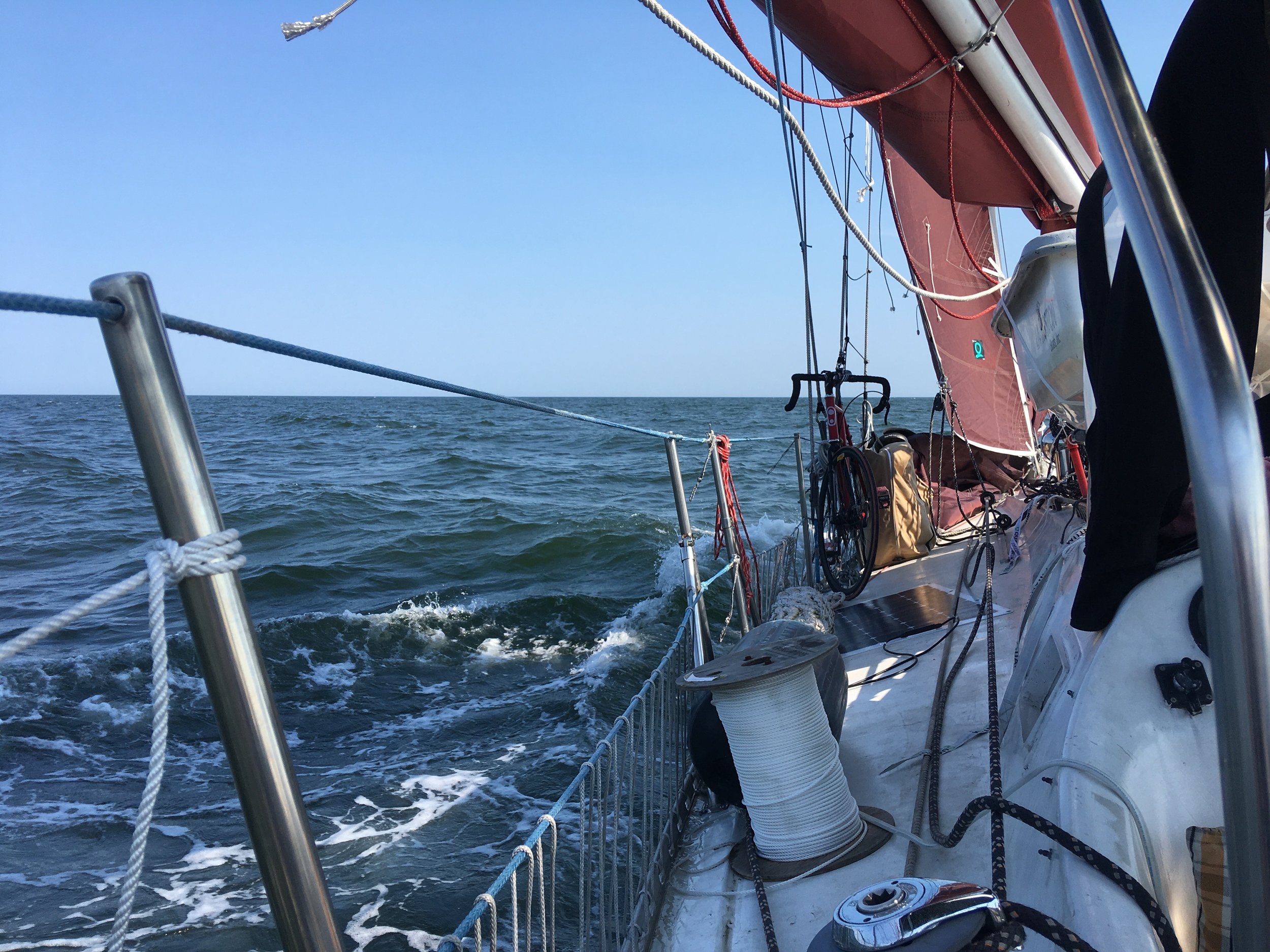Heaving to is a tried and true storm survival method. Notice I say storm "survival" and not storm "comfort". That is because there is nothing comfortable about being in a storm!
The waves built to around 20 feet with a period of 8 seconds. This means that every 8 seconds involved us dropping 20 feet and then climbing back up 20 feet. Imagine being on a massive roller coaster for 3 days, and you don't have a special seat with a harness. Instead, you are trying to sleep on the roller coaster, walk around on the roller coaster, even go to the bathroom on the roller coaster!
Cabinets would open by accident and the contents would pour out. The best thing to do at this point was to shut the cabinet and not put whatever fell out back in because opening the cabinet to stow what fell would risk having everything else also fall out on the next wave.
The inside of the boat became a disaster as we were constantly tossed around. Maddie was too seasick to eat, and I didn't feel like eating since that involved getting tossed around the cabin like a rag doll.
While the slick did calm breaking waves down into rolling swell, it only worked on the waves that were approaching from the direction of the wind. Rogue waves which travel their own path do not come from the direction of the wind and are therefore able to sidestep the slick and slam right into us. One most notable of waves came at us diagonally and crashed into the starboard bow with a massive wall of water and the crest of the wave travelled over the boat, coming down on the port deck. It basically looked like a surfer in the green tube!
While we remained safe inside the boat, we did have some issues arise that precluded us from continuing our journey to the Bahamas. Our hatches are rather old and appear to have a few minor leaks. When it rains a simple towel will suffice to collect any water that seeps through the hatch. Three days of rain and breaking waves on the hatch meant that our bed became completely soaked in salt water. Not only was our bed wet, but there was no way it would dry anytime soon.
We also suffered some damage to the boat from the breaking waves and felt that it would behoove us to seek a safe harbor to carry out the repairs.


